Quantification and modelling
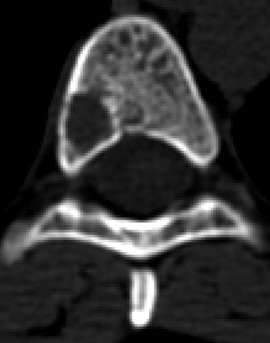 CT slice of a human Osteolytic vertebra.
CT slice of a human Osteolytic vertebra.Fracture risk prediction in the metastatic spine
Bone strength assessment and fracture risk prediction are critically important in guiding clinical treatment decisions aimed at preventing and/or lessening the burden of skeletal metastases. We developed medical image analysis algorithms that use an atlas-based segmentation approach, relying on demons deformable registration to quantify osteolytic and osteoblastic involvement within individual vertebrae over time to assess disease progression, and aid in clinical decision making.
Cancer treatment can also impact skeletal stability. High rates of vertebral compression fractures have been reported following spine stereotactic body radiotherapy (SBRT, 11-39 per cent). Application of the developed software pipeline successfully identified a pre-treatment osteolytic disease volume threshold of >11.6 predicted post-SBRT vertebral compression fractures (odds ratio 37.4). More recent work has identified that changes in vertebral volume over time are indicative of ongoing vertebral compression fracture progression post SBRT.
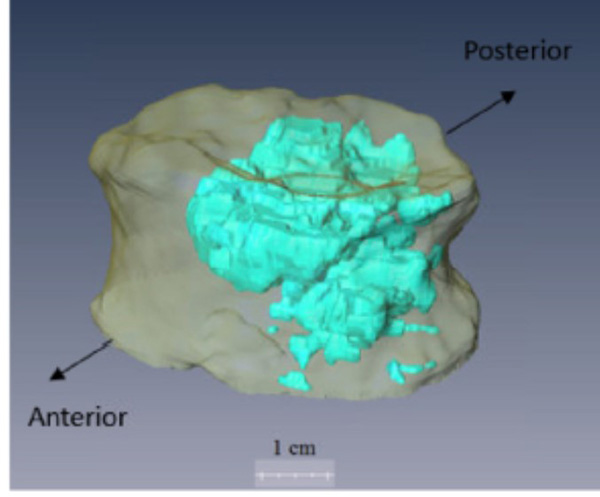 Osteolytic volume automatically segmented within a vertebral body.
Osteolytic volume automatically segmented within a vertebral body.
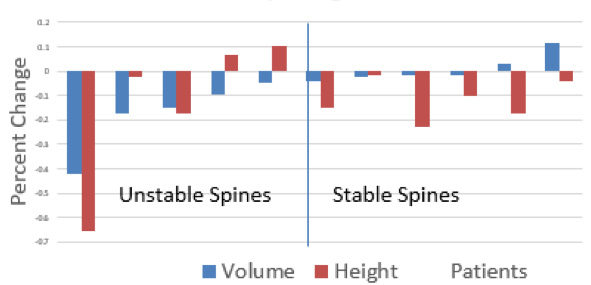 Greater change in vertebral body volume over time predicts ultimate spinal stability.
Greater change in vertebral body volume over time predicts ultimate spinal stability.
Vertebral compression fracture risk prediction: A deep learning approach
U net Convolutional Neural Network (CNN) architectures have been shown to be fast and highly accurate for image segmentation problems. A combination of segmentation and classification information (fractured/not fractured) will ultimately be used to train and develop a CNN based approach for fracture risk prediction in the metastatic spine. Deeper networks using additional training data and systematic hyper-parameter optimization may further improve initial segmentation results. We also aim to combine CT and MR images using a latent model to enable multimodal vertebral segmentation with an ultimate goal of integrating this approach into a clinical scoring system.
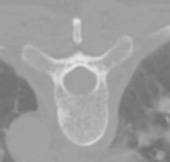 Input layer.
Input layer.
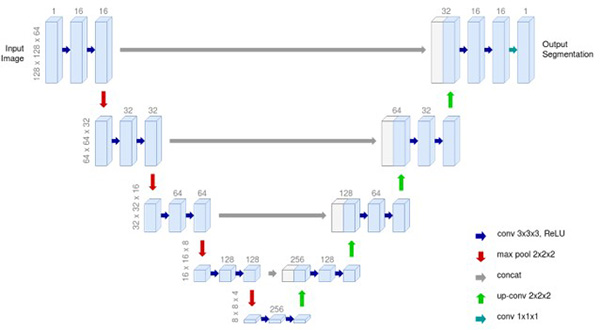
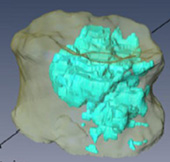 Output layer.
Output layer. U net convolutional neural network architecture and sample results for vertebral body segmentation comparing manual and CNN-based methods. Vertebral body segmentation network trained (370 vertebrae) and tested (97 vertebrae).
U net convolutional neural network architecture and sample results for vertebral body segmentation comparing manual and CNN-based methods. Vertebral body segmentation network trained (370 vertebrae) and tested (97 vertebrae).


